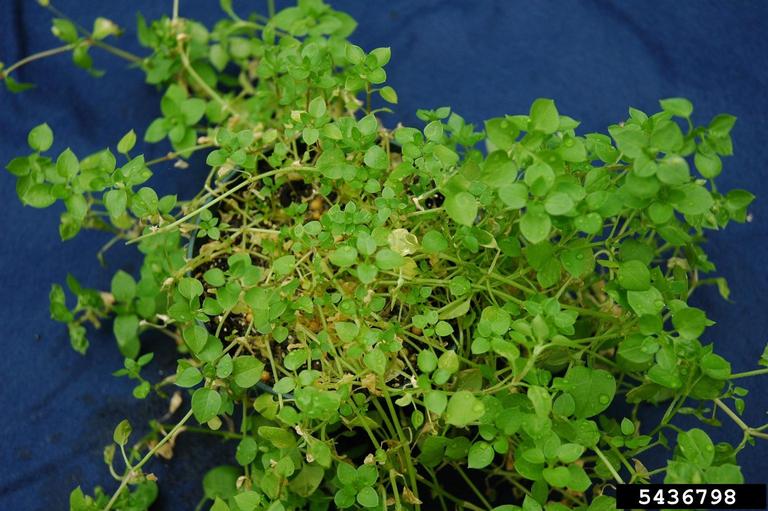Example Article for Broadwater County Extension Agent
Weed Of The Month: Common Chickweed
Author: Allison Kosto, MSU Broadwater County Extension Agent
Weed of the Month: Common Chickweed
Allison Kosto
MSU Broadwater County Extension Agent
Within a week, I had several samples of Common Chickweed brought into the office. This is a sneaky plant that often doesn’t emerge until late summer so it can cause alarm when you suddenly notice it.
Description & Habitat
Native to Eurasia and North Africa, common chickweed was introduced to North America through human development. It is now widespread on nearly every continent, including North America and is one of the most common weeds globally. It is often seen in lawns, landscape areas and gardens. It tends to form dense prostate patches.
Common chickweed is a winter annual that emerges in late summer or fall. It has a spreading growth pattern that can cover lawn grass and form dense patches. It has small leaves that orient opposite one another on the stem. It also has small white flowers that are star-shaped. Common chickweed prefers shade and moist soils and can grow up to 18 inches in the shade and only 3 to 6 inches in the sun. It has a shallow root system but is a prolific seed producer, averaging about 25,000 seeds per plant.
Common chickweed is known for taking over turf areas, especially if there is poor grass establishment and drainage issues. It can also be troublesome in landscape areas, garden boxes and occasionally vegetable gardens.
Management
Maintaining a healthy and dense lawn or plant community will help reduce common chickweed. Because of a weak root system, hand pulling is rarely successful at pulling out the roots. However, if it is done before seed maturation and done repeatedly, it can be successful in reducing chickweed populations. Tilling and hoeing can also be successful on young plants. Mulching is an effective control method where practical. Landscape fabric or organic mulch at least 3 inches thick is necessary.
Herbicides can be effective. Preemergent herbicides are a good option in lawns and perennial landscape areas. Commonly used post-emergent chemicals include Banvel, Trimec, Mecomec and Vista. Always read and follow the entire label when applying herbicide. Common chemical names are used for clarity but do not imply endorsement of a product or brand.
For assistance on weed identification and management, contact the MSU Extension Office in Broadwater County at 406-266-9242.
Article Images
Click on Image Thumbnail(s) to view fullsize image
PhotoCredit: See caption
Image 1 Caption: Common Chickeweed
Photo Credit: Bruce Ackley, The Ohio State University, Bugwood.org
